2020 Travel Outlook: Hopper's Projections for the New Year
As 2019 comes to a close, it’s a natural time to reflect on the year behind us as well as look forward to the new year ahead.

Hayley Berg - Tue Dec 17 2019

Summary
2019 was another record-breaking year for airfare - average round trip prices dropped to their lowest levels in the past 4 years and global consumer demand continued to grow. As with each new year, 2020 will bring new challenges and trends to the travel industry. We’ve rounded up our top travel projections that we're sure to see in the new year - from diversified fares to stable jet fuel prices.
2020 Forecast: 5 Projections For The New Year
1. Low Airfare Prices
Airfare will continue its downward trajectory in 2020, with January prices projected to be the lowest since 2013, averaging $196 round-trip in the US.
Lower prices are driven by a number of key factors, including heavy competition in the market, entry of low cost carriers, and favorable jet fuel prices. We expect these factors to continue driving airlines to maintain low ticket prices into 2020.
Airfare reached a four year low in 2019, with good deal round trip domestic airfare averaging just shy of $275 per ticket, and round trip international airfare averaging around $800 per ticket.
This year, international fares were down 4.6% compared to 2018, and 6.2% compared to 2017. Domestic fares have fallen further, with prices down 8.5% compared to 2018 and 17% compared to 2017 levels. Expect further drops in 2020.
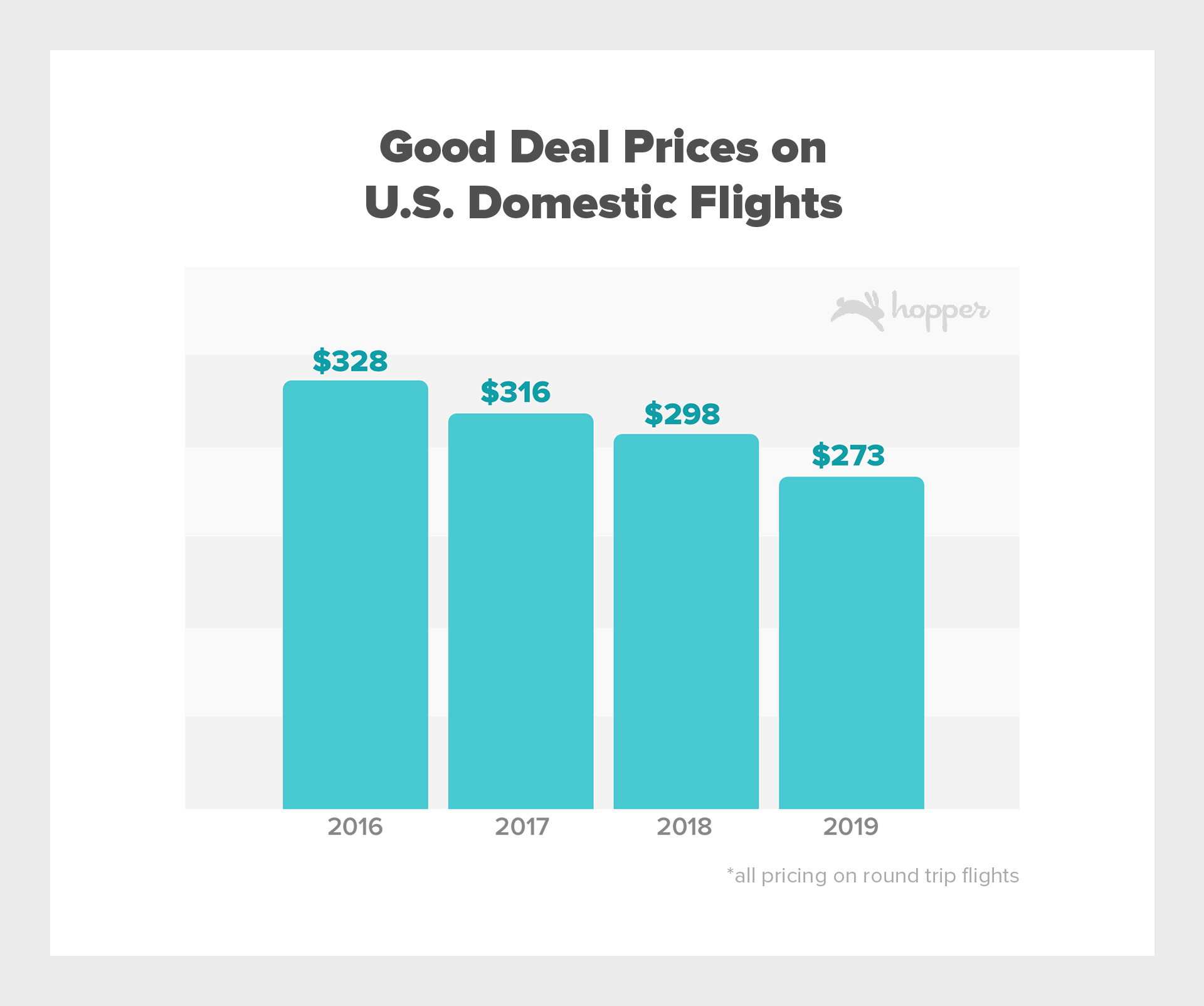
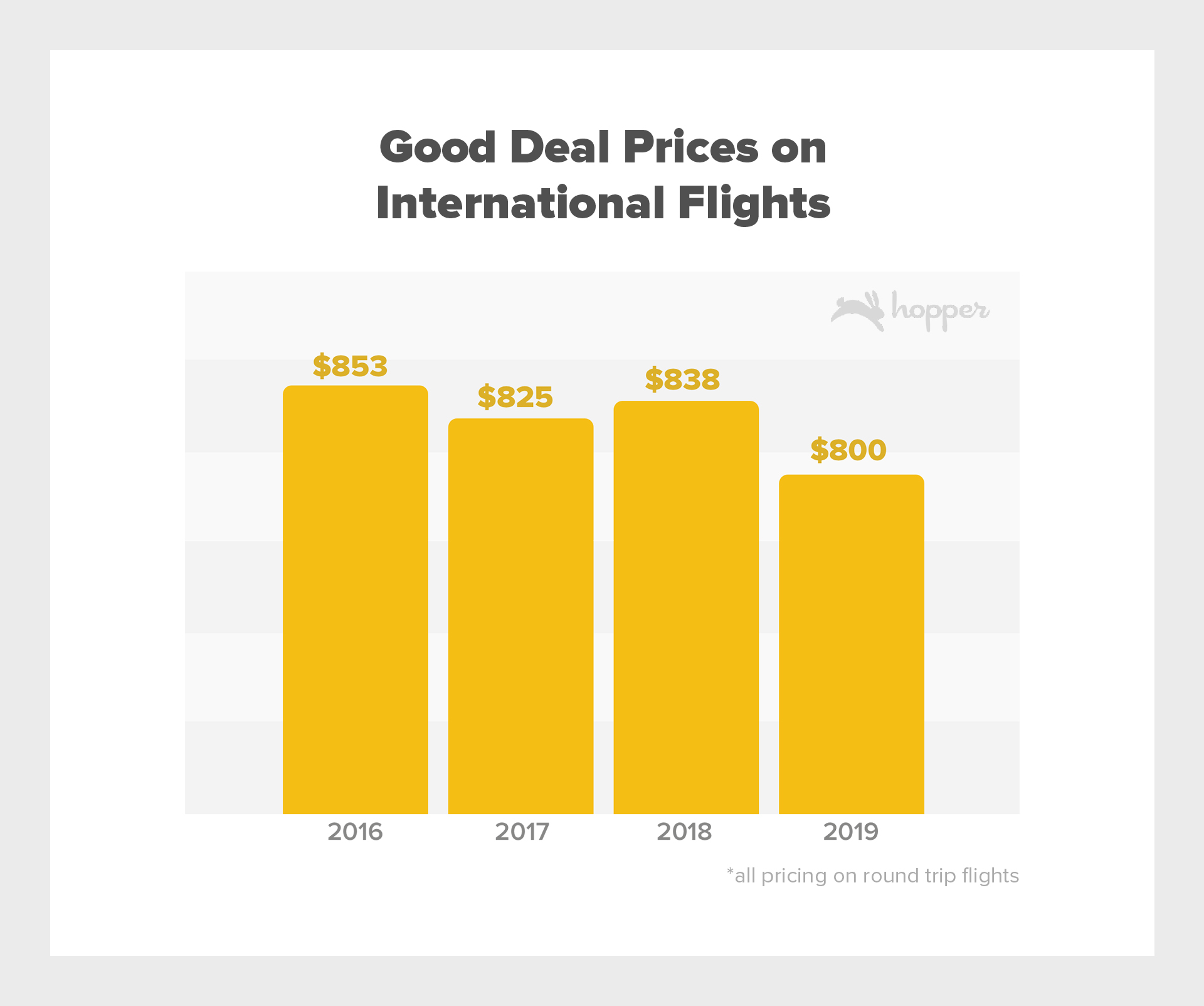
2. Unbundling of Fares
Expect to see the continued unbundling of fares (i.e. new fare classes like “Basic Economy” and “Premium Economy,” as well as ancillaries like extra baggage, wifi, and seat selection) in 2020 as a way for airlines to further compete. And be sure to take advantage of the extra low prices they add to the market!
By creating new fare classes and separating tickets into their various components, the industry has created more choices for consumers while maintaining low prices in the market.
3. Low Cost Carrier Expansion
Entry and expansion of low cost carriers (LCCs) contributed significantly to the downward price pressure on domestic fares this year, and is expected to continue into 2020.
Low cost carriers (LCCs), such as Spirit and Frontier Airlines, have been expanding their presence both in the domestic market and abroad, driving down prices on the routes where they offer service.
Pressured by no frills base fares offered by LCCs, major carriers drop prices when an LCC enters a new route, resulting in an average price decrease of 17%. In 2019, nearly 60 routes experienced the entry of a new LCC in the US domestic market (+5.5% compared to 2018).
4. Stable Jet Fuel Prices
Jet Fuel Prices are expected to remain relatively stable in 2020. Barring any unexpected spikes in the new year, the stability of prices will enable carriers to continue offering record low prices.
US Jet Fuel prices ended the year at $1.85/gal, down 18% compared to the same time in 2018. Fuel prices throughout the year remained stable month to month, following a longer term recovery from a large drop in mid 2015.
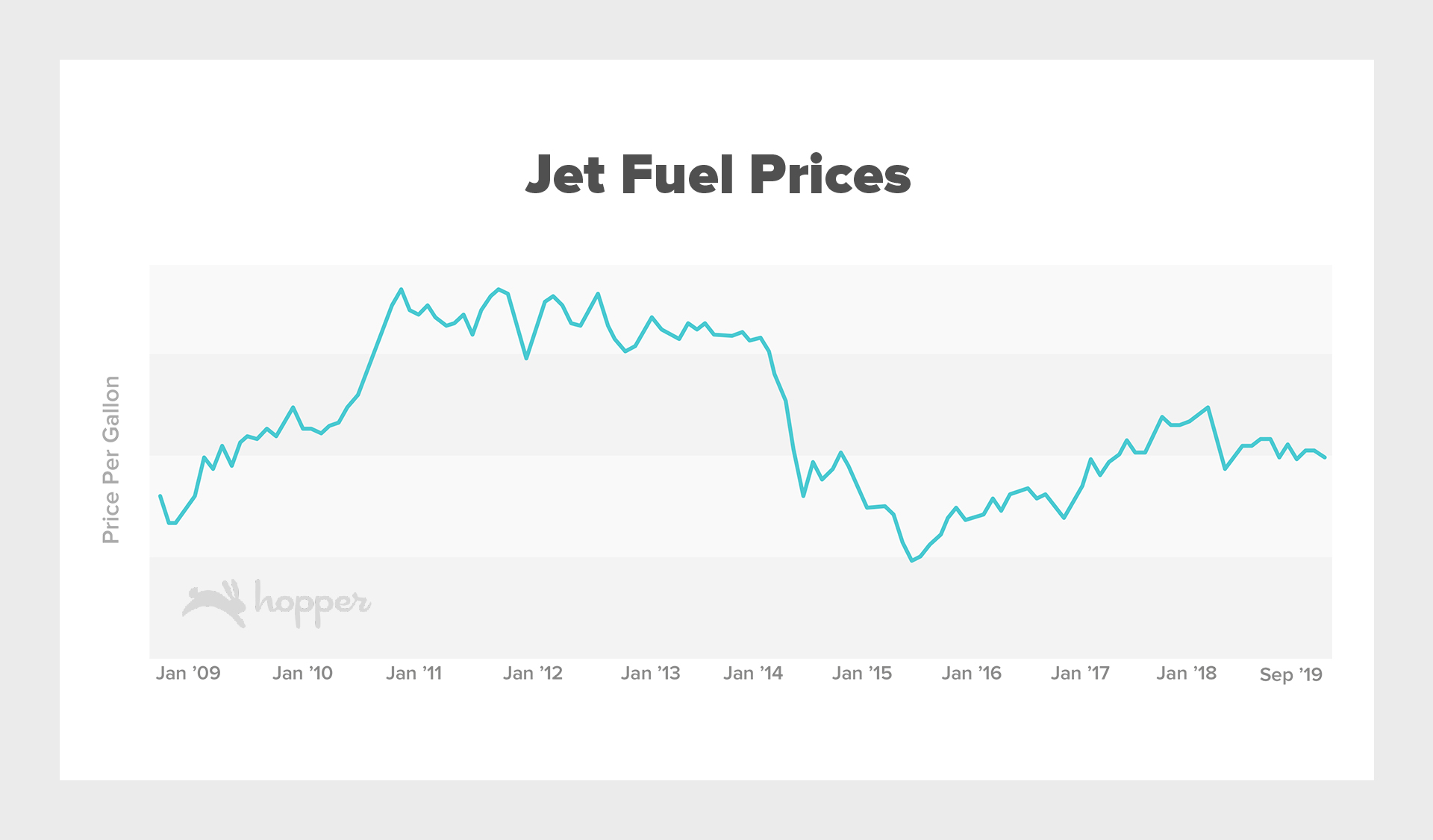
5. Continued Capacity Growth
Airline capacity is expected to grow in 2020, but could grow more slowly than expected given continued uncertainty around the Boeing 737 MAX return to service and delivery delays of Boeing aircrafts on order for 2019 and 2020.
From the collapse of Thomas Cook and WOW Airlines, to the grounding of the Boeing 737 MAX planes in March of 2019, there were many unexpected interruptions to service this year.
Despite these interruptions, total domestic airline capacity (number of seats flying) grew in 2019 by +4% overall, driven by both major carriers (+3.2%) and low cost carriers (+13.9%).
2020: First Look At Trending Destinations
2020 is right around the corner and travelers have already started searching for their next vacation destinations.
With low prices for transatlantic travel expected to continue into 2020, and Europe maintaining its history of tourist popularity, bucketlist destinations like Venice, Munich, and Paris make the top 10 for early trending destinations from the US.
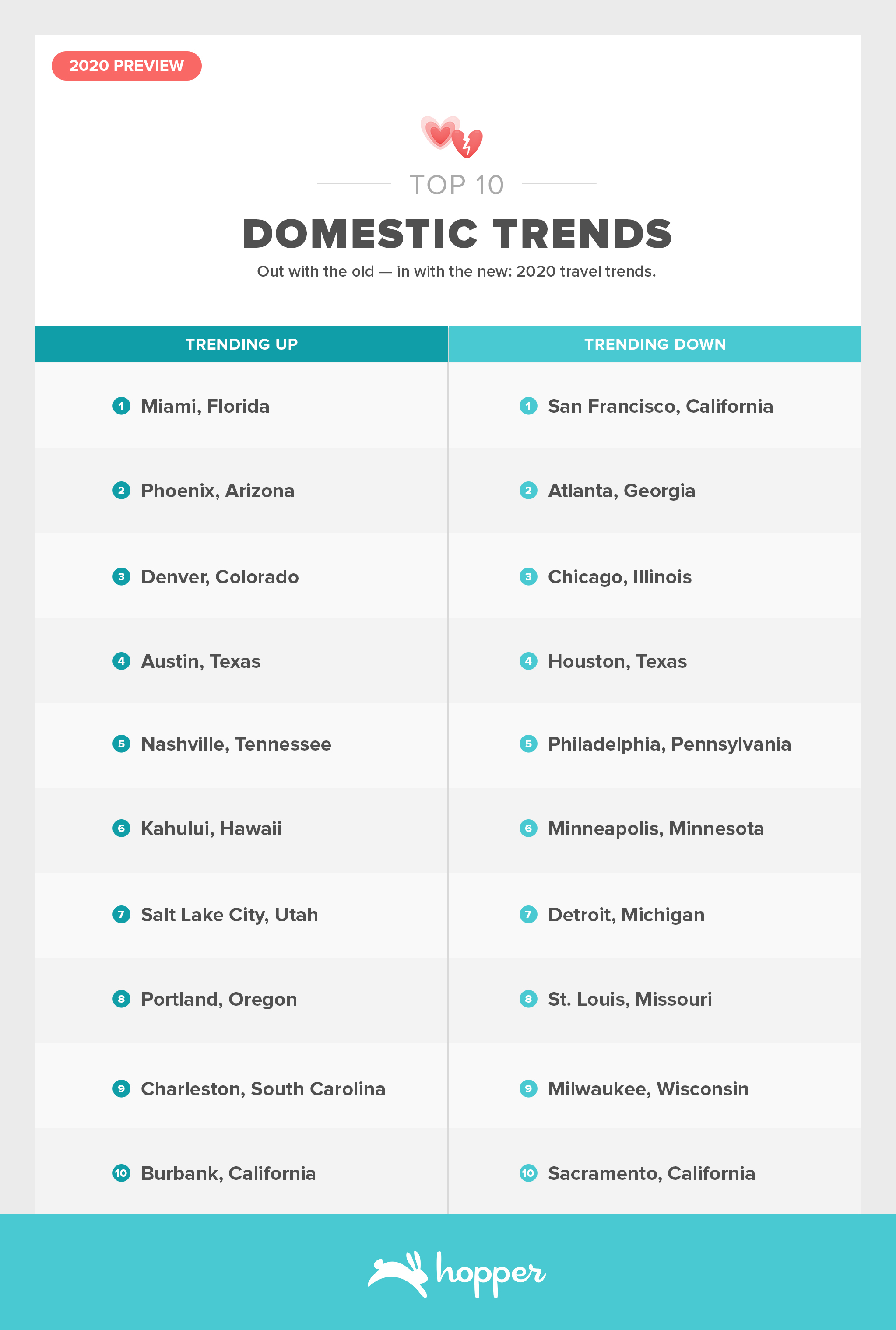
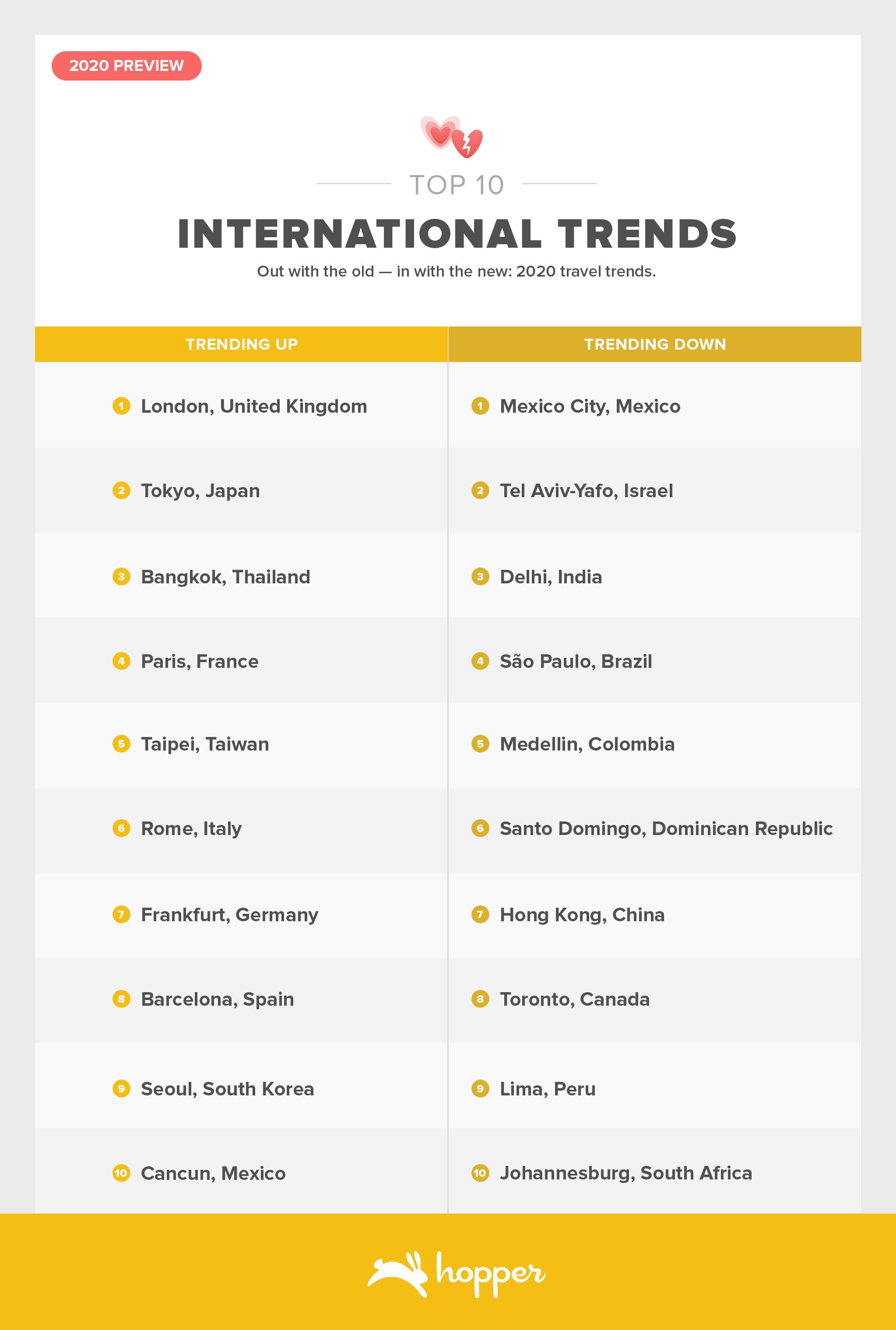
Destinations trending for 2020 based on 2019 bookings on Hopper and search demand for departure dates in 2020 at the end of 2019 compared to 2018 and 2017 levels.
Get the Hopper app to find the best deals.
You could save up to 40% on your next flight!
